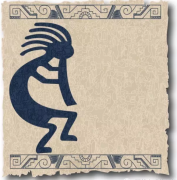Costa Rica treated with honey
Rose Xia, a new favorite of the boutique coffee industry, was introduced to Costa Rica in 1953.
From contact with coffee to engaging in coffee, I have drunk coffee from Costa Rica and found that all I drank was honey-treated coffee. And no matter it is yellow honey, red honey or black honey treatment, everything is complete. It really makes people want to understand.

(the above shows the geographical location of Costa Rica, located on the isthmus of Central America, bordering Nicaragua in the north and Panama in the south.)
It turns out that Costa Rican boutique coffee only began to come to the fore in the past decade. Although Costa Rica introduced coffee from Cuba as early as 1729 and carried out commercial cultivation, it made great efforts to develop the coffee bean industry. But it mainly produces and distributes mixed coffee beans and Italian commercial beans for export to its nearest neighbor, the United States, which is one of the largest coffee consumers. Because of this, the quality of Costa Rican coffee beans at that time had not yet reached the level of fine coffee. Moreover, due to the poor quality of coffee beans, Costa Rica does not have a national standard (a national standard for regulating the grade of raw coffee beans), because its country is not qualified to evaluate it.
Until later, Costa Rica in order to strengthen the export of high-quality coffee to Europe, the United States, Japan and other countries. Just began to vigorously develop high-quality coffee and increase the added value of coffee exports. At the same time, the government has set up a "coffee trust fund" to help coffee farmers in need tide over their financial difficulties and cultivate high-quality coffee. And in order to make coffee have better quality and characteristics, we used the popular honey treatment method in recent years to change the reputation of poor quality coffee. Therefore, the Costa Rican boutique coffee we are now exposed to is the fine processed honey beans of each of its estates. However, there are still coffee beans treated with ordinary sun water, but the quality and flavor are not so good, so they are not as widely traded as honey-treated beans.

In the picture, inside the red peel of coffee, the transparent gum that wraps the coffee beans is pectin flesh.

The picture shows the red honey treated beans being dried.

The picture shows medium-baked black honey beans from the famous Tarasu in Costa Rica.
Although the development of boutique coffee started relatively late, but now Costa Rican boutique coffee is developing rapidly, with honey-treated mild acidity, soft taste and sweet high-quality berry flavor, it is not to be underestimated. And the so-called honey treatment method: refers to the coffee beans in the washing method to remove the peel and flesh of the step, select the remaining part of the pectin pulp to carry out a fermentation process, this treatment is honey treatment. According to the amount of remaining pectin meat, there are different flavors and names. For example, Costa Rica with yellow honey has about 25% pectin left over, red honey is about 50%, and black honey retains about 80% of pectin flesh. The most obvious difference between them is that they are sweeter from yellow, red and black. Coupled with the rich fruit rhyme, it is deeply loved by all the coffee gluttons.

Although Costa Rica has won the recognition of coffee gluttons through honey-treated coffee beans, it is also closely related to Costa Rica's superior geographical and climatic conditions, and the selection of Arabica varieties of coffee. Costa Rica's high-quality coffee beans are called "very hard beans" (SHB), and the quality of hard beans (HB) and slightly hard beans (SH) decline in turn, and this is also the way it is graded. Extremely hard beans grow at an altitude of more than 1500 meters, and altitude always represents the quality of coffee, and high altitude means better quality. In addition, due to the high altitude drop caused by sufficient rainfall, is very beneficial to the growth of coffee trees; and high altitude night temperature is low, resulting in slow growth of trees, so that coffee fruit better absorb more nutrients, coffee flavor is also richer.
Its three most famous producing areas are Tarasu, south of the Costa Rican capital SanJose, as well as the producing areas of the Central Valley and the western valley. There are many excellent independent estates, all of which are carefully cultivating more fine washed and honey-treated coffee beans. let's hope that Costa Rica will bring us more honey-treated coffee surprises.
If you reprint it, please indicate the author and source. Thank you for reading.
Important Notice :
前街咖啡 FrontStreet Coffee has moved to new addredd:
FrontStreet Coffee Address: 315,Donghua East Road,GuangZhou
Tel:020 38364473
- Prev

Types of coffee in common areas of Sumatra, Indonesia
RASUNA Lasuna, a new variety from Sumatra, Indonesia, was hybridized with Typica / Katim Catimor. MANDHELING Mantenin coffee bean Ateng (a kind of catimor Katim) crosses with other Arabica coffee. The coffee produced by the Batak people in Lake Toba in north-central Sumatra or in the Lindong Mountains is mostly grown without shade and exposed to half the sun.
- Next

Antigua coffee in Guatemala with a story
A cup of Antigua coffee in Guatemala seems to let us see the sudden disappearance of the mysterious Mayans multiply in the ancient land, history brushed away their existence, history has achieved their eternity. If a person's wrinkles depict a person's path, then the smell of coffee remembers the origin of a cup of coffee: about its hometown, harvest time, baking and research.
Related
- Detailed explanation of Jadeite planting Land in Panamanian Jadeite Manor introduction to the grading system of Jadeite competitive bidding, Red bid, Green bid and Rose Summer
- Story of Coffee planting in Brenka region of Costa Rica Stonehenge Manor anaerobic heavy honey treatment of flavor mouth
- What's on the barrel of Blue Mountain Coffee beans?
- Can American coffee also pull flowers? How to use hot American style to pull out a good-looking pattern?
- Can you make a cold extract with coffee beans? What is the right proportion for cold-extracted coffee formula?
- Indonesian PWN Gold Mandrine Coffee Origin Features Flavor How to Chong? Mandolin coffee is American.
- A brief introduction to the flavor characteristics of Brazilian yellow bourbon coffee beans
- What is the effect of different water quality on the flavor of cold-extracted coffee? What kind of water is best for brewing coffee?
- Why do you think of Rose Summer whenever you mention Panamanian coffee?
- Introduction to the characteristics of authentic blue mountain coffee bean producing areas? What is the CIB Coffee Authority in Jamaica?

